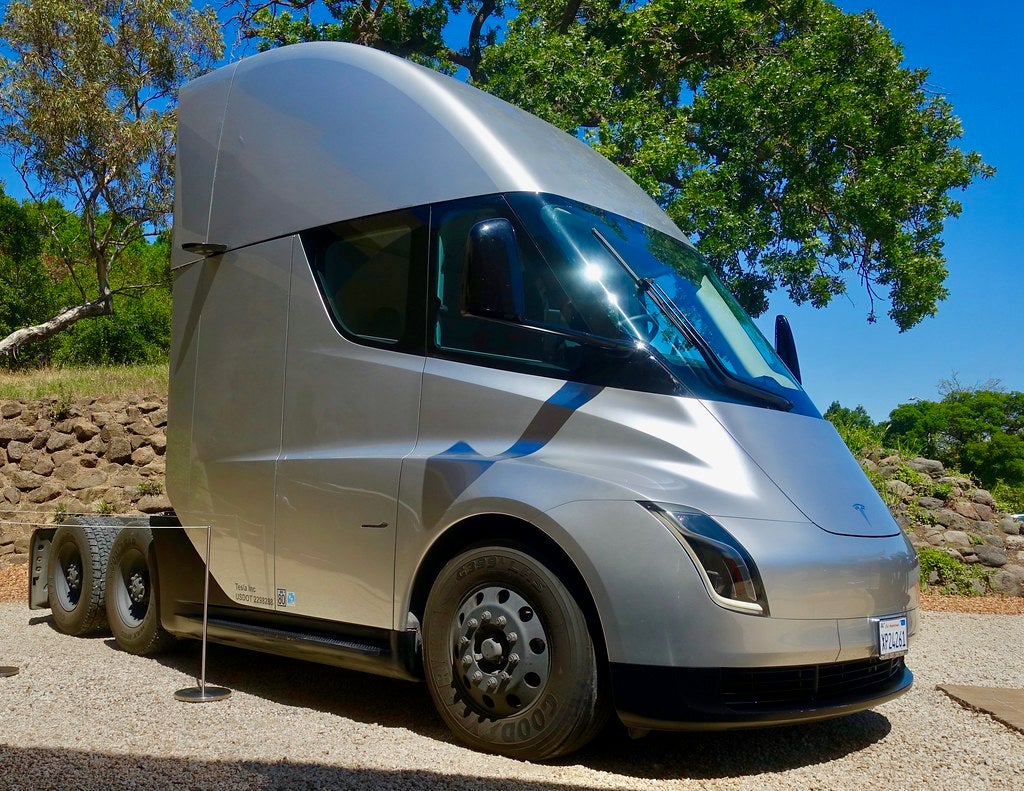A Smart Solution to the ‘Deadly’ Mix of Trucking Pollution and Coronavirus
Now, more than ever, clean air and healthy lungs are priceless, says Earthjustice attorney Paul Cort.
This piece was originally published in the San Francisco Chronicle on April 29, 2020.
From Los Angeles to Sacramento to the Bay Area, Californians are breathing in cleaner air than ever before as we shelter in place to stop the spread of the novel coronavirus. But while lighter commuter traffic means that you can now catch a glimpse of the Farallon Islands from the East Bay hills some days, this is a short reprieve. The truth is that we don’t need just one clear day in California — we need clear days all the time. The long-term health impacts of localized air pollution last a lifetime, with the effects borne out in asthma attacks, lung damage and heart conditions.
Health experts have been ringing the bell about the health impacts of air pollution for years. But amid the COVID-19 pandemic, science is showing that the combination of air pollution and the virus is deadly in new ways. New peer-reviewed research from the Chan School of Public Health at Harvard University shows that even a small increase in particle pollution causes a significant jump in mortality rates from the virus.
Californians living near freeways and major paths for the goods movement industry are especially at risk. The ports of Oakland, Long Beach, and Los Angeles are some of the largest in the country, handling a massive portion of the goods coming to the country across the Pacific. As large diesel trucks move the goods to warehouses, fulfillment centers and railyards, they emit a cloud of diesel pollution that is especially onerous for the people living near them.
In Southern California, researchers estimate that 2.5 million Californians live in high-pollution zones within 1,000 feet of a freeway. West Oakland, entirely encircled by the Port of Oakland and three freeways, breathes the dirtiest air in the region. The American Lung Association’s 2020 “State of the Air” report indicates that the top cities for year-round pollution in the U.S. are all here in California.
But this is not a problem without a solution.
Before the pandemic, the California Air Resources Board was close to the finish line in developing the nation’s first electric truck standard, a critical regulation that would put more pollution-free electric trucks on the road in the next decade. As trucks account for 45% of on-road NOx emissions in the U.S., this rule would play an outsized role in alleviating air pollution for millions of people.
Right here in the Bay Area, this rule would pave the way for replacing the 6,000 to 8,000 diesel trucks servicing the Port of Oakland and trucking along the Bay Area’s freeways with zero-emissions electric trucks.
Industry groups are resisting this opportunity to protect the health of Californians. Their latest objections are perversely using the pandemic attacking our respiratory systems as an excuse to continue polluting, calling on our state air quality agency to indefinitely delay this and other public health protections. But their claims of hardship from the rule are not legitimate. For one thing, companies are already building zero-emissions trucks that promise to save operators money over the life of the trucks, and for another, the new standard will ramp up slowly, giving the trucking industry a decade to comply.
In the big picture, this standard will play an important role in the economic recovery in our state and will promote high-quality jobs in an industry that, before the pandemic, was predicted to grow at a healthy clip. A report from the Los Angeles County Economic Development Corporation published just weeks before the state went into lockdown found that the electric vehicle industry was booming, creating over a quarter million well-paying jobs in California. Jobs in the industry have grown fast, in fact twice as fast as the state average.
Ensuring that these jobs come back quickly will help put California back on a path toward cleaner air and a healthy economy. Green energy investments supported California’s recovery after the last recession, and they can play an instrumental role in getting Californians back to work this time, too.
The movement of goods in California is essential for all of us — and now, we have an opportunity to begin to take the heavy diesel pollution that so harms our health out of the equation. More than ever, California has to chart a steady path forward and make sensible investments for a future with good jobs, healthy lungs and clean air.
The California Regional Office fights for the rights of all to a healthy environment regardless of where in the state they live; we fight to protect the magnificent natural spaces and wildlife found in California; and we fight to transition California to a zero-emissions future where cars, trucks, buildings, and power plants run on clean energy, not fossil fuels.
